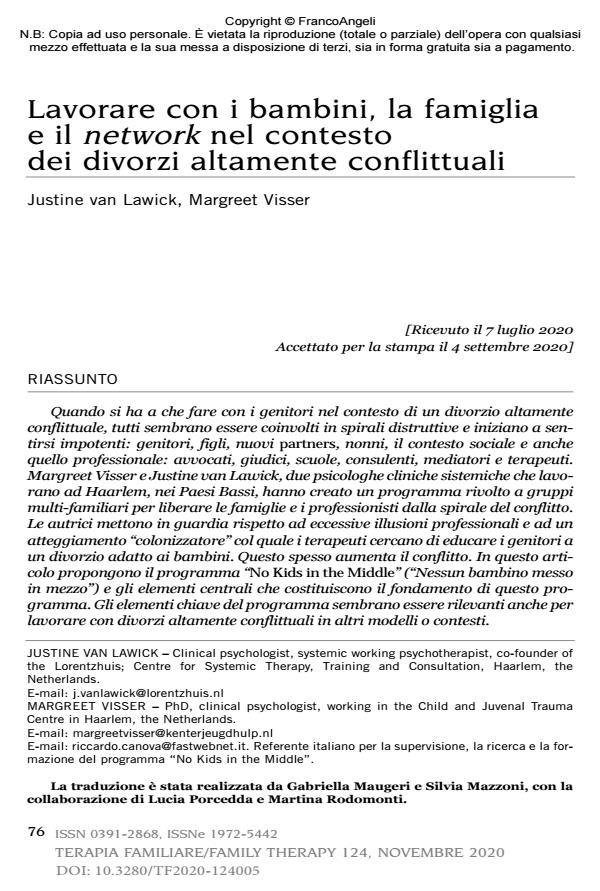Working with children, family and network in the context of high conflict divorce
Journal title TERAPIA FAMILIARE
Author/s Justine van Lawick, Margreet Visser
Publishing Year 2021 Issue 2020/124
Language Italian Pages 23 P. 76-98 File size 128 KB
DOI 10.3280/TF2020-124005
DOI is like a bar code for intellectual property: to have more infomation
click here
Below, you can see the article first page
If you want to buy this article in PDF format, you can do it, following the instructions to buy download credits

FrancoAngeli is member of Publishers International Linking Association, Inc (PILA), a not-for-profit association which run the CrossRef service enabling links to and from online scholarly content.
With divorced parents in high conflict everybody seems to get caught in the destructive spirals and starts to feel powerless: parents, children, new partners, grandparents, the social network, and also the professional network: lawyers, judges, schools, counsellors, mediators and therapists. Margreet Visser and Justine van Lawick, two systemic working clinical psychologists in Haarlem, the Netherlands, created a multi-family group program to free the families and professionals from the conflict spirals. They warn for too much professional illusions and a colonising attitude in which the therapists try to educate the parents about a good and child friendly divorce. That often increases the struggle. In this article they propose the No kids in the Middle program and the keystones that form the fundament of this program. The keystones seem also to be relevant for working with high conflict divorces in other formats or contexts.
Keywords: High conflict divorce, therapeutic illusions, liminal phase, attitude, multi-family therapy, communities, children destructive patterns, experiential work, letting go.
Justine van Lawick, Margreet Visser, Lavorare con i bambini, la famiglia e il network nel contesto dei divorzi altamente conflittuali in "TERAPIA FAMILIARE" 124/2020, pp 76-98, DOI: 10.3280/TF2020-124005